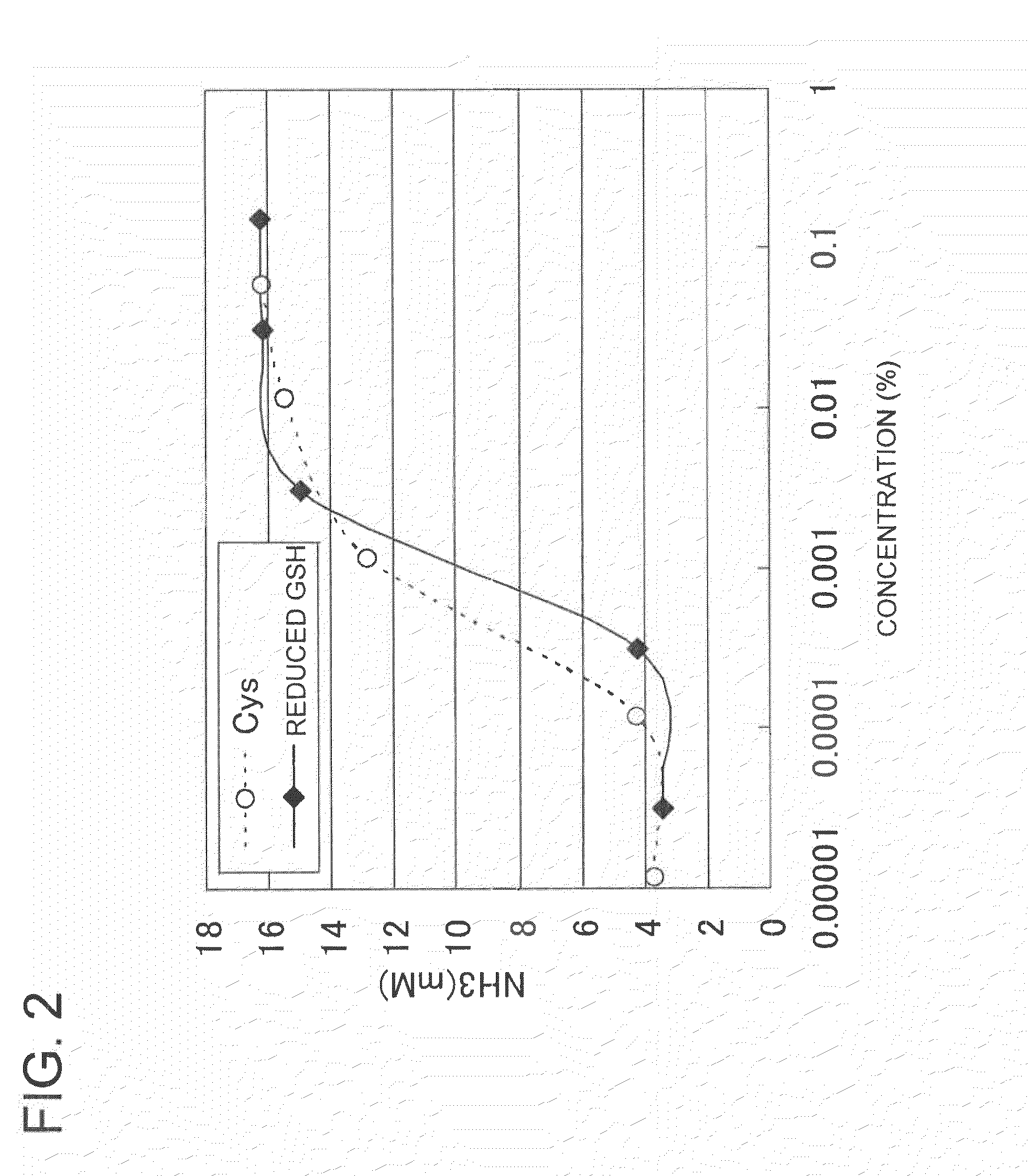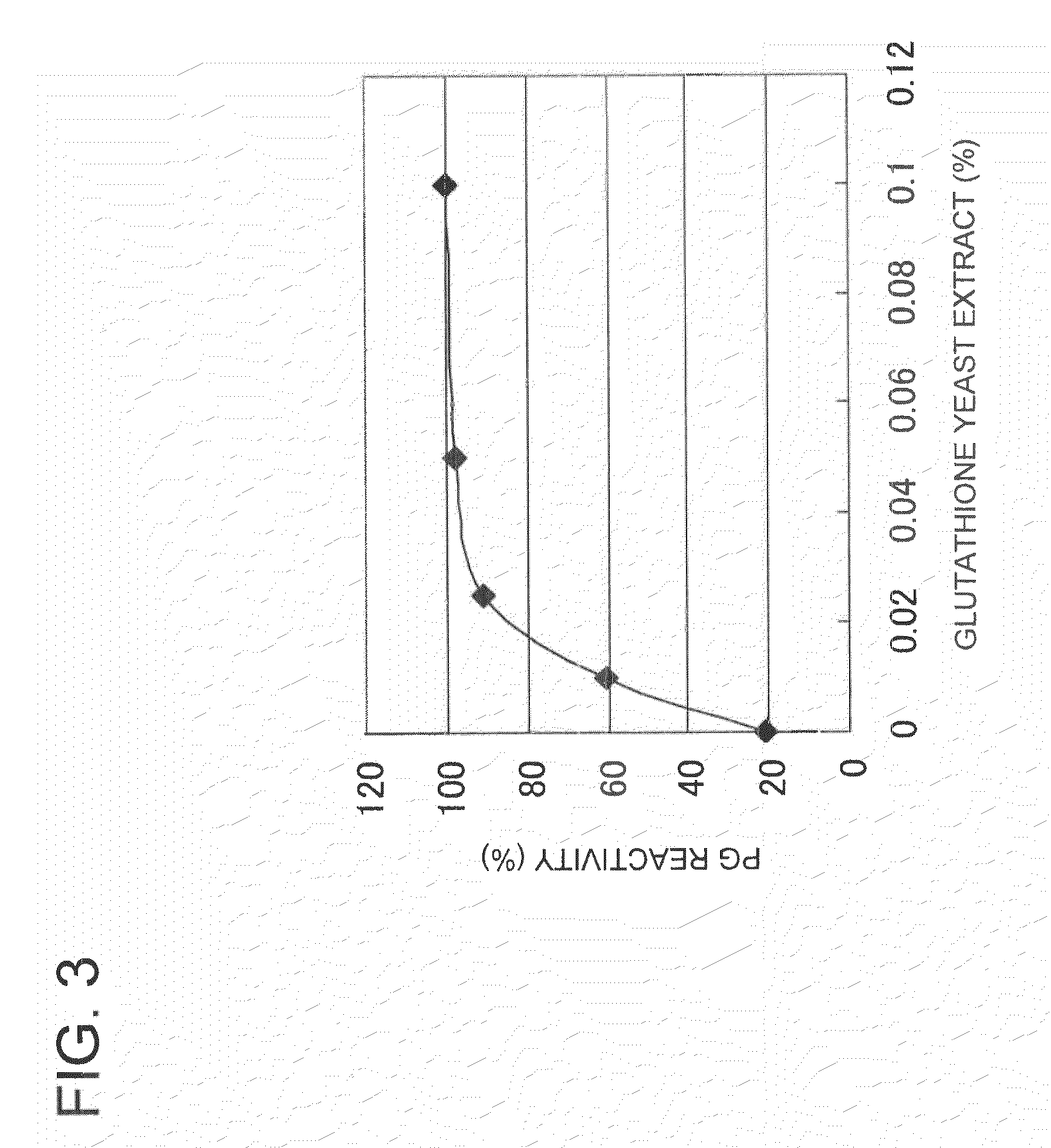Method for producing modified milk
- Summary
- Abstract
- Description
- Claims
- Application Information
AI Technical Summary
Benefits of technology
Problems solved by technology
Method used
Image
Examples
experimental example 1
[0064]For confirming the difference of reactivity with PG between LTLT sterilized milk (66° C., 30 minutes: Takanashi low temperature sterilized milk) and UHT sterilized milk (130° C., 2 seconds: Magokoro Rakuno 3.6 milk), to each milk was added 0 to 0.4 U / ml of PG (purified product prepared by a method disclosed in Appl. Microbiol. Biotechnol., (2008) 78: 67-74, which is incorporated herein by reference in its entirety, relative activity 120 U / mg-protein) and reacted at 50° C. for 60 minutes. As shown in FIG. 1, LTLT milk had low reactivity compared with UHT milk and obtained only one fifth to one fourth the amount of reaction by the same amount of enzyme. It is estimated that an inhibitor contained in a low molecule fraction in the milk is the cause as indicated by following Experimental Examples 2 to 4, and it is an object of the present invention to remove the inhibiting factor and improve reactivity of a raw material milk.
experimental example 2
[0065]The purified PG product described in Experimental Example 1 (50 U / ml) was diluted 100 times using following solvents (a) to (c). (a): 20 mM phosphoric acid buffer solution (pH 6.3), (b): LTLT sterilized milk (66° C., 30 minutes: Takanashi low temperature sterilized milk), (c): ultrafiltrte (Amicon, Centriprep YM-10; cut by molecular weight 10,000) of supernatant of supercentrifuge of (b). The activity of PG was measured by a method described above in the present specification using Z-Gln-Gly as a substrate and the results are shown in Table 1. When PG was diluted by a phosphoric acid buffer solution, the activity was 0.5 u / ml, and when diluted by LTLT sterilized milk, the activity lowered to about 12%. When PG was diluted by a low molecule fraction obtained by the ultrafiltration of LTLT sterilized milk, the activity disappeared completely. The results indicate that a PG inhibitor exists in LTLT sterilized milk, especially in the low molecule fraction.
TABLE 1ActivitySolvent fo...
experimental example 3
[0066]Next, an example will be explained, in which the PG activity recovers by treating the low molecule fraction obtained by ultrafiltration of LTLT sterilized milk with heat or a reducing agent. The purified PG product described in Experimental Example 2 (0.5 U / ml) was diluted by 100 times with ultrafiltrate treated with heat block at 90° C. for 5 minutes or 1.0 mM of reduced glutathione as a reducing agent (corresponding to 0.03 g per 100 g of a raw material milk). The PG activity was measured as in Experimental Example 2 and the results are shown in Table 2. The ultrafiltrate eliminated almost all of the PG activity; however, PG activity recovered drastically by heat treatment or adding a reducing agent. The same result was obtained when used casein micelle (precipitated pellet obtained by ultracentrifuge (Hitachi-Koki, Ltd., Himac CP80WX, 28,600 rpm, 60 min., 25° C.)) in milk instead of Z-Gln-Gly as a substrate (data not shown). The reactivity of casein micelle, as a main prote...
PUM
 Login to View More
Login to View More Abstract
Description
Claims
Application Information
 Login to View More
Login to View More - R&D
- Intellectual Property
- Life Sciences
- Materials
- Tech Scout
- Unparalleled Data Quality
- Higher Quality Content
- 60% Fewer Hallucinations
Browse by: Latest US Patents, China's latest patents, Technical Efficacy Thesaurus, Application Domain, Technology Topic, Popular Technical Reports.
© 2025 PatSnap. All rights reserved.Legal|Privacy policy|Modern Slavery Act Transparency Statement|Sitemap|About US| Contact US: help@patsnap.com



